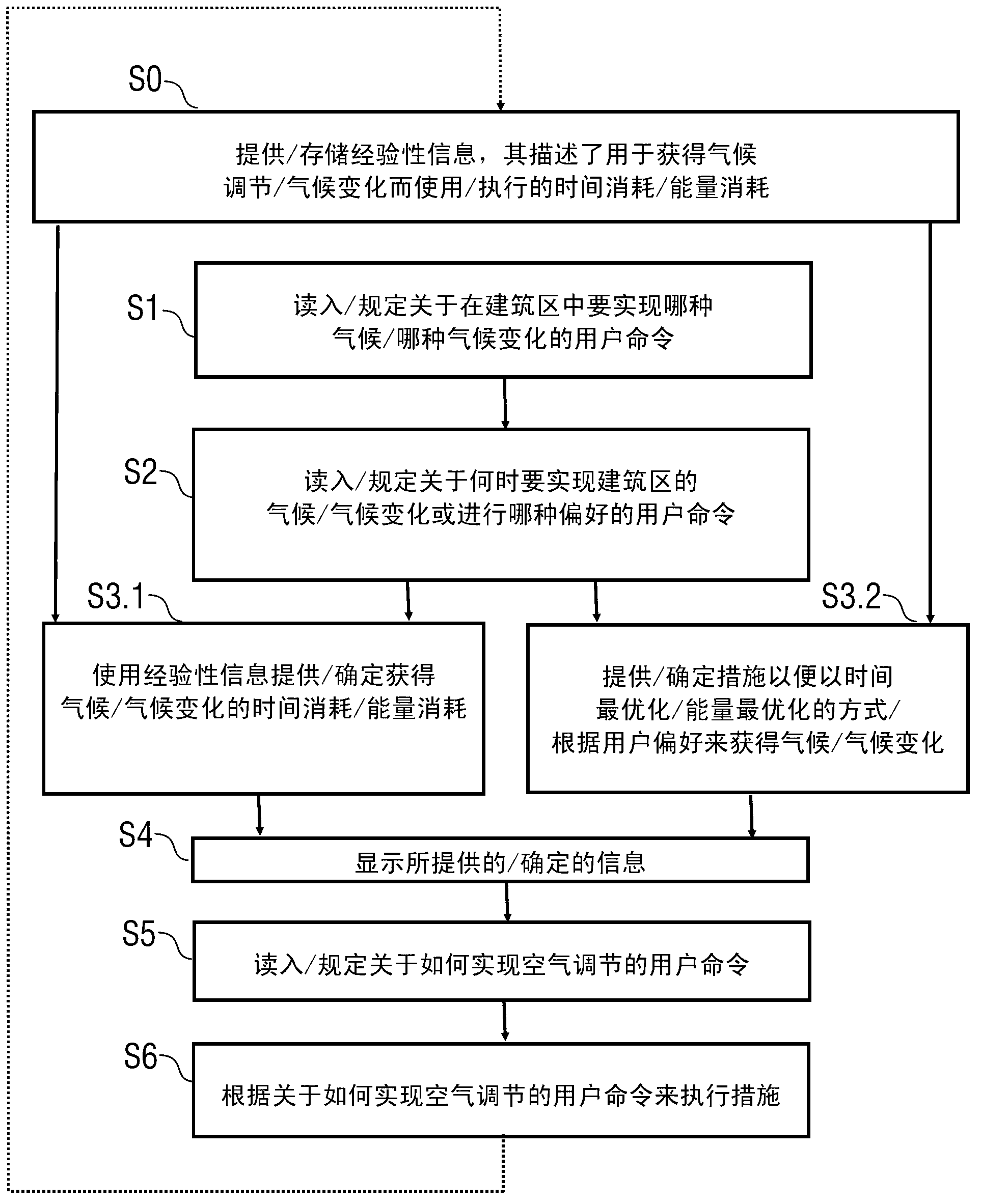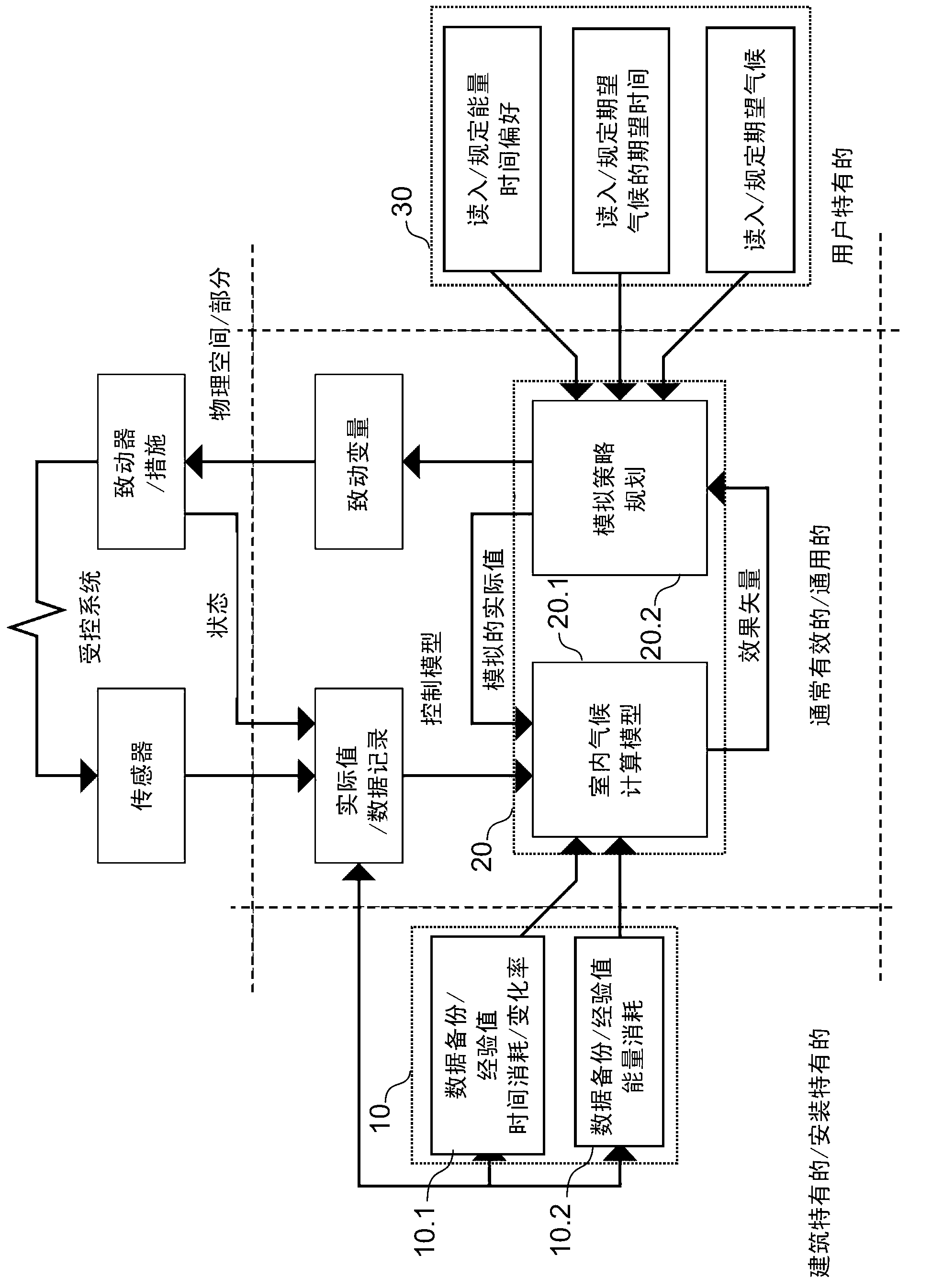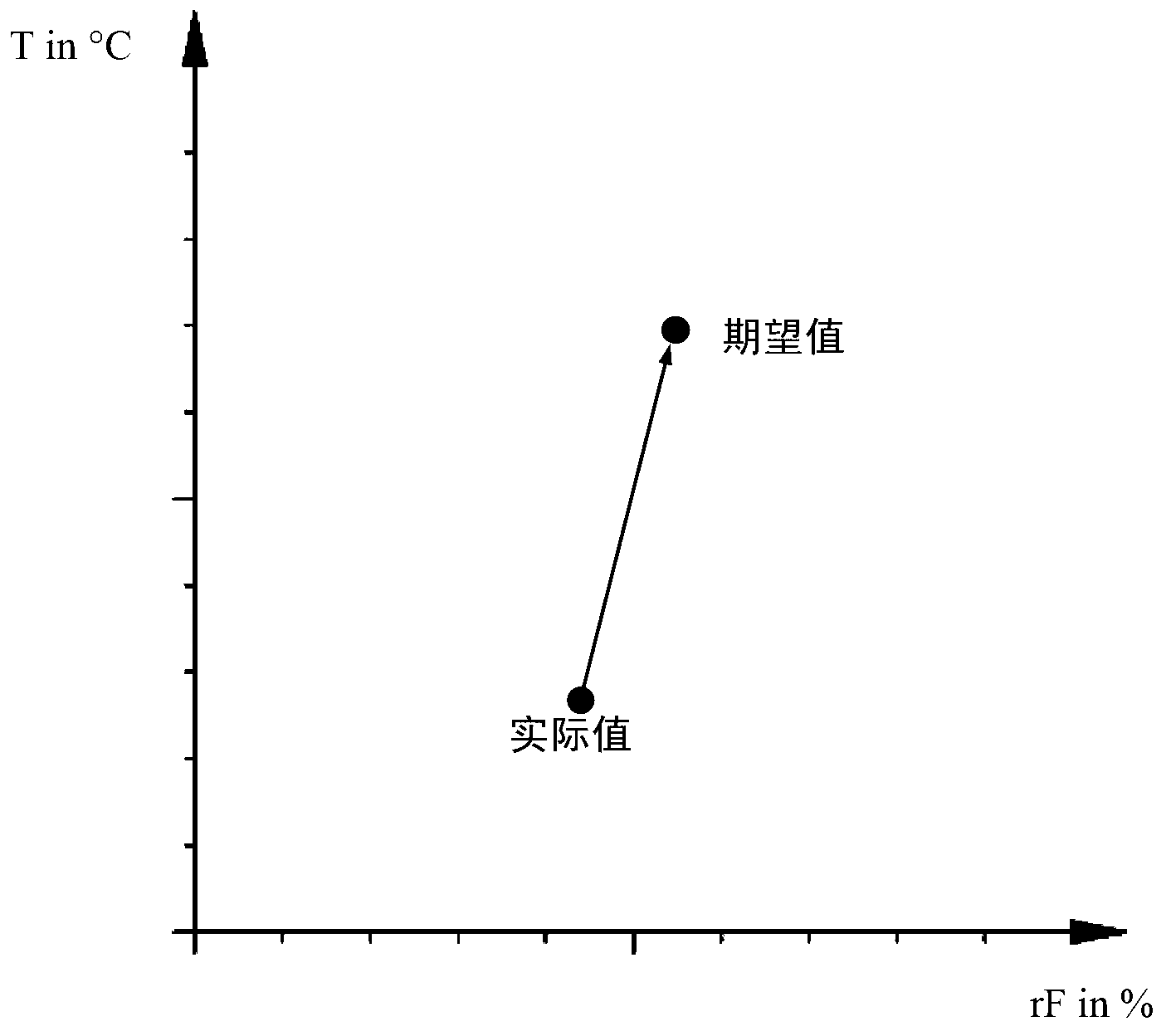Building automation system
A building automation, construction technology, applied in general control systems, control/regulation systems, heating and ventilation control systems, etc., to achieve the effect of promoting action
- Summary
- Abstract
- Description
- Claims
- Application Information
AI Technical Summary
Problems solved by technology
Method used
Image
Examples
example 1
[0144] Example 1: Several measures (ventilation and heating) have to be implemented to achieve a desired value (desired climate). The desired value should be achieved in as energy-efficient a manner as possible (see Figure 7 ). The outside temperature is lower than the building zone temperature.
[0145] Three strategies of action are in principle solutions to the problems under discussion: ventilate first and then heat, heat first and then ventilate, or both at the same time.
[0146] The determination unit 20 will determine the first strategy (ventilation followed by heating), since in this case the resulting sum of the individual vector lengths is the shortest and therefore the most efficient.
[0147] If heating is performed first, the heating period will be longer, since greater energy losses through ventilation at high temperatures must be compensated.
[0148] If these two measures are carried out simultaneously, the influence vector of the heating will be significa...
example 2
[0149] Example 2: The user selects an energy-efficient operating mode (such as Figure 7 energy optimization or 100% energy efficiency as described). The user opened the window even though the heater was running. To maintain the desired value (desired climate) the heating output must be increased. In this example the control system according to the invention will turn off the heater, since it is not predictable that the desired value will be achieved in an energy efficient manner in the future. Even so, the user does not feel at the mercy of the heater being turned off, since he himself has previously selected the "energy optimized" preference (or at least has been strongly set to energy efficiency).
[0150] If the weighting of energy efficiency is minimized (such as Figure 7 said 50% energy efficiency and 50% aging), then this could lead to a situation where the heater continues to be activated. Users accept the energy loss associated with ventilation by establishing pr...
PUM
 Login to View More
Login to View More Abstract
Description
Claims
Application Information
 Login to View More
Login to View More - R&D
- Intellectual Property
- Life Sciences
- Materials
- Tech Scout
- Unparalleled Data Quality
- Higher Quality Content
- 60% Fewer Hallucinations
Browse by: Latest US Patents, China's latest patents, Technical Efficacy Thesaurus, Application Domain, Technology Topic, Popular Technical Reports.
© 2025 PatSnap. All rights reserved.Legal|Privacy policy|Modern Slavery Act Transparency Statement|Sitemap|About US| Contact US: help@patsnap.com



